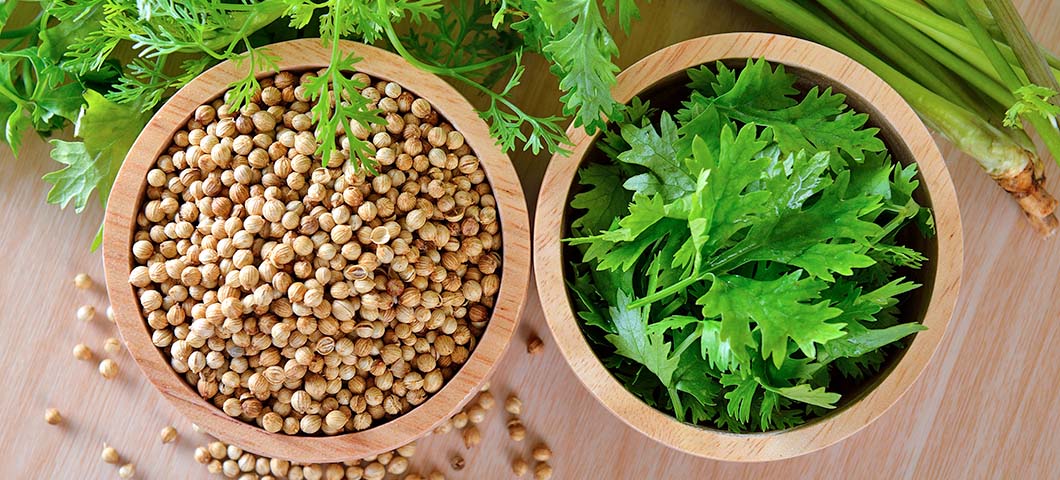Background
Coriander (Coriandrum sativum L.) is a plant with many uses. Its leaves are known as cilantro and are used for seasoning foods. Its seed, actually a fruit, is the spice called coriander. Both the herb and seed of coriander are a source of essential oil. Cilantro oil is steam-distilled from the immature plant, while coriander oil is distilled from the crushed mature seeds.
The annual plant is easy to grow and self-seeds readily. Seed is direct-sown in the field and seedlings will tolerate light spring frost. Large-seeded and small-seeded forms are available. The large-seeded forms are lower in essential oil but mature in a shorter season (100 days). The small-seeded form requires a longer growing season to mature seed (120 days) and may not be dependable in western Montana.
Research summary
Coriander (large-seeded type, Richter's Seeds, Ontario, Canada) was direct-seeded in the field May 4, 1998, and May 5, 1999, at the rate of 14.4 lb/acre. Eight-row plots were 15 ft long with rows 1 ft apart and four replications. Stand was 15 plants/ft in 1998 and 14 plants/ft in 1999. Plants were swathed on September 18, 1998 and September 21, 1999, and combined three days later. Border rows were included. Seeds were ground before distillation. Problems with distillation occurred in 1999, so no oil data is reported for that year.
|
Year
|
Seed (lb/a) ± SE
|
Oil (lb/a)
|
|---|---|---|
|
1998
|
2,648 ± 302
|
12.9 *
|
|
1999
|
2,364 ± 82
|
--
|
* oil distillation not replicated
References
- USDA. 2000. Tropical Products: World Markets and Trade. Foreign Agricultural Service, Circular Series FTROP 1-00, March 2000.
- Luayza, G., R. Brevedan, and R. Palomo. 1996. Coriander under irrigation in Argentina. p. 590- 594. In: J. Janick (ed.), Progress in new crops. ASHS Press, Arlington, VA.


